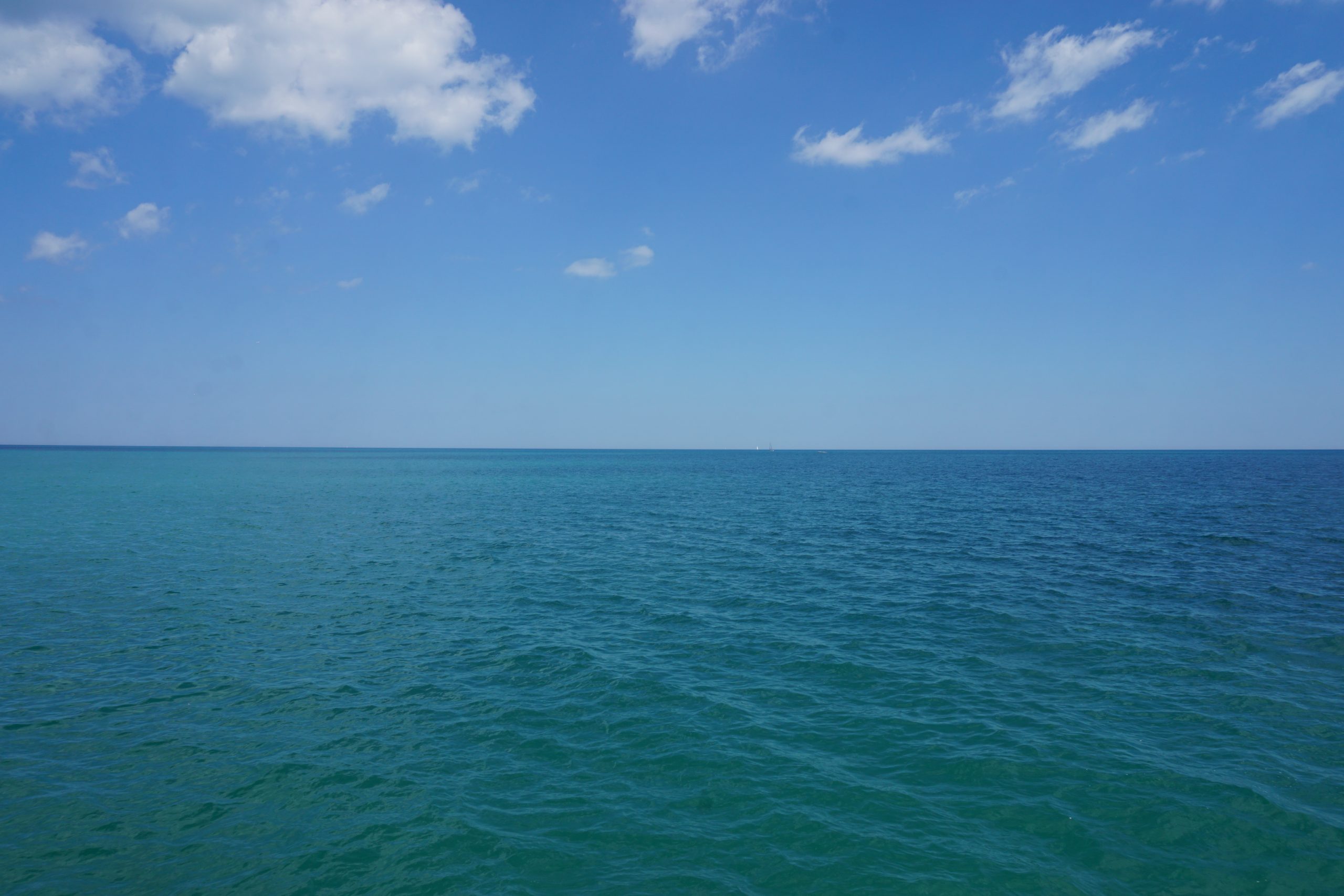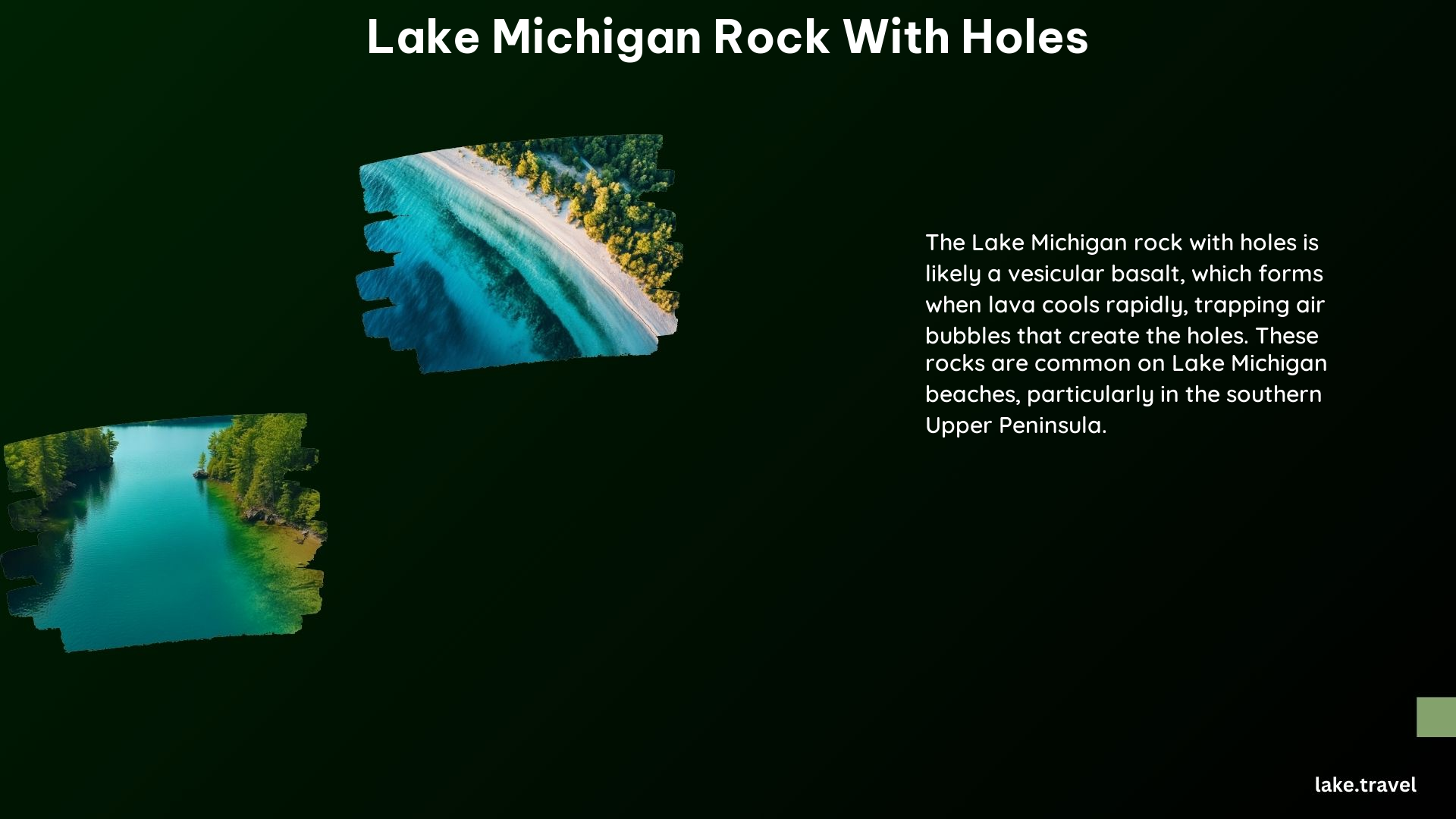Lake Michigan is renowned for its diverse and fascinating geological formations, and among the most captivating are the rocks with holes found along its beaches. These unique rock formations, formed through various natural processes, have captured the attention of rockhounds, beachcombers, and nature enthusiasts alike. In this blog post, we’ll delve into the different types of Lake Michigan rocks with holes and explore the fascinating stories behind their creation.
Vesicular Basalt: Trapped Gas Bubbles

One of the most common types of Lake Michigan rocks with holes is the vesicular basalt. These rocks are characterized by numerous holes, which were formed by gas bubbles trapped in the lava as it cooled. The resulting porous and lightweight structure gives these rocks a distinctive appearance, often resembling a sponge-like texture. Vesicular basalt can be found in various shades of gray, and their unique formation process makes them a fascinating addition to any rock collection.
Hag Stones: Naturally Formed Holes

Another intriguing type of Lake Michigan rock with holes is the hag stone. These rocks have naturally formed holes, often in a variety of sizes and colors. The formation of hag stones is believed to be the result of the relentless action of water, which gradually erodes and carves out the holes over time. These stones are highly sought after by beachcombers and are often believed to have mystical or protective properties, making them a popular choice for jewelry and talismans.
Crinoids: Fossilized Flower-Like Creatures
Lake Michigan beaches are also home to a unique type of rock with holes – the crinoid fossil. Crinoids are marine animals that resemble small discs with holes in their centers, similar to Cheerios. These fossils are the remains of an ancient creature that was a relative of the starfish, with a flower-like appearance. Over time, the crinoid stems have been preserved in the sedimentary rocks, creating these distinctive fossil formations.
Button Stones: Fossilized Plant Stems
Another fascinating type of Lake Michigan rock with holes is the button stone. These rocks have round holes and are often found in clusters. The formation of button stones is thought to be the result of fossilized clay settling around plant stems, which then erode to create the holes. These unique rock formations provide a glimpse into the past, revealing the diverse plant life that once thrived in the region.
Tubular Concretions: Trace Fossils
The final type of Lake Michigan rock with holes we’ll explore is the tubular concretion. These are small rocks with holes formed by lake bottom sediments settling around plant stems and then cementing. When the plant dies and rots, a hole is left through the middle, creating a trace fossil. These rocks offer a fascinating insight into the ancient ecosystem of Lake Michigan, preserving the remnants of long-extinct plant life.
Responsible Rockhounding on Lake Michigan Beaches
For those interested in exploring and collecting these unique Lake Michigan rocks with holes, it’s essential to be mindful of local regulations and respect private property rights. Michigan State Parks generally allow rockhounding and beachcombing, but there is a state law limiting the collection of common rocks, stones, minerals, and invertebrate fossils to 25 pounds per person per year. By following these guidelines, you can enjoy the thrill of discovering these geological wonders while preserving the natural beauty of Lake Michigan’s beaches for generations to come.
Conclusion
Lake Michigan’s beaches are a treasure trove of unique and fascinating geological formations, including the captivating rocks with holes. From the vesicular basalt to the hag stones, crinoids, button stones, and tubular concretions, each type of rock tells a story of the lake’s dynamic history and the diverse life that once thrived in its waters. By understanding the formation and significance of these remarkable rocks, we can appreciate the natural wonder of Lake Michigan and the importance of responsible stewardship of its precious resources.
